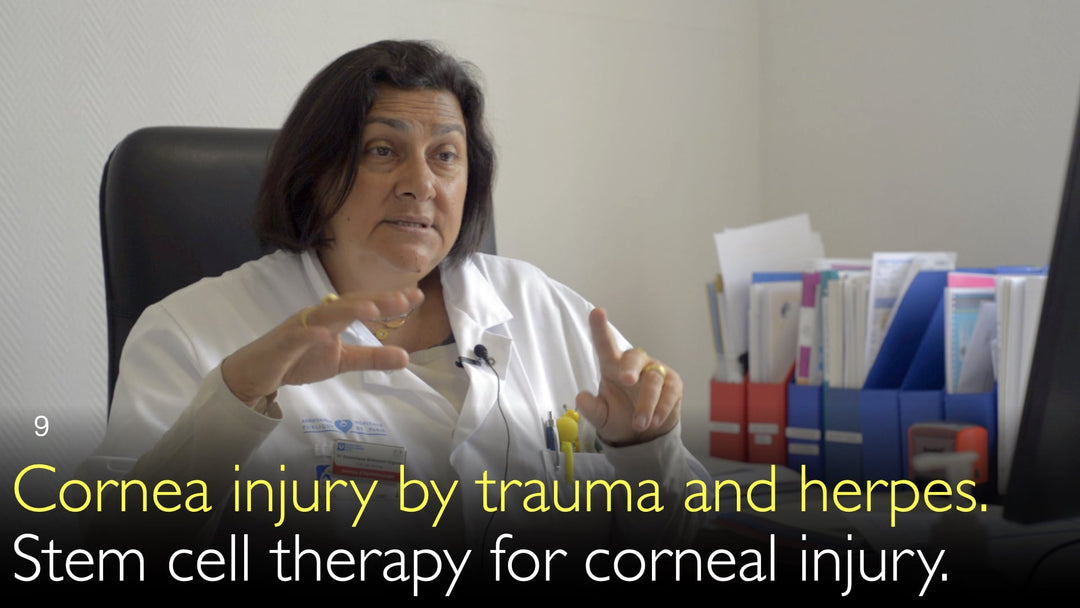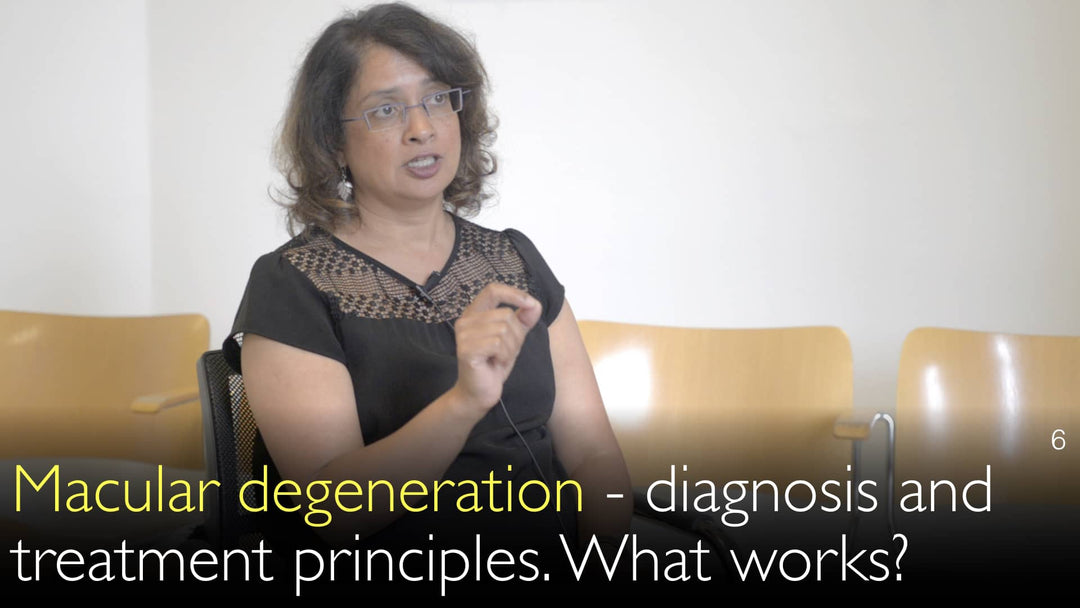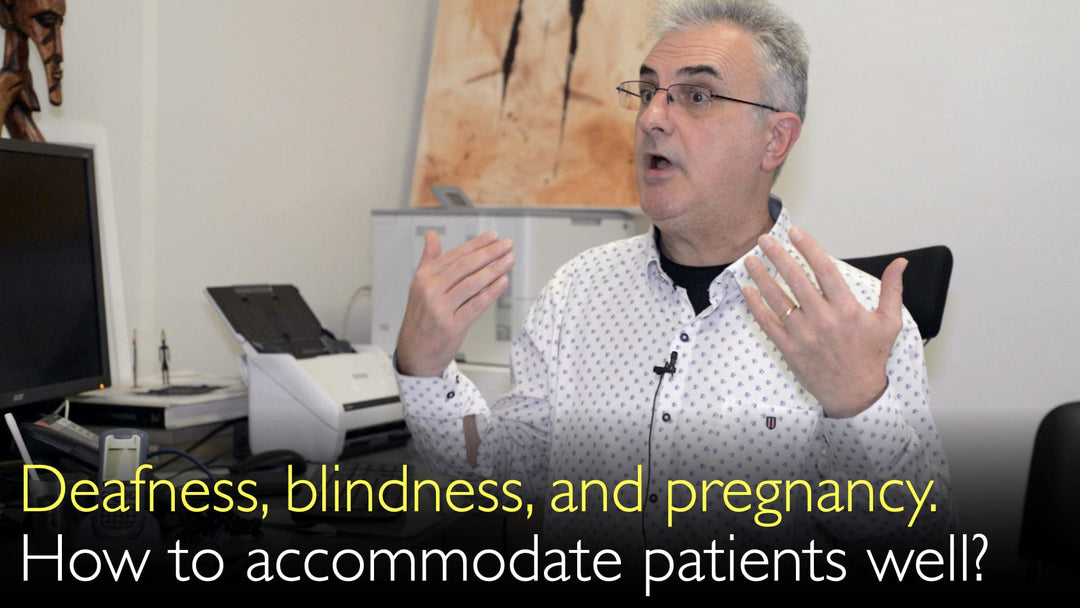Leading expert in anterior eye diseases, Dr. Dominique Bremond-Gignac, MD, explains how stem cell therapy for corneal injury aims to restore vision by regenerating the eye's transparent surface. She details the use of induced pluripotent stem cells (iPS cells) to treat limbal stem cell deficiency caused by burns, trauma, or genetic conditions like aniridia, highlighting that this advanced treatment is still in the research phase but holds significant promise for future clinical application.
Stem Cell Therapy for Corneal Injury and Vision Restoration
Jump To Section
- Cornea Injury Overview
- Limbal Stem Cell Deficiency Causes
- Stem Cell Treatment Goal
- iPS Cells and Research
- Corneal Transparency Restoration
- Future Treatments Development
- Science-Based Approach
- Full Transcript
Cornea Injury Overview
Injury to the cornea is a common ophthalmic problem. The cornea is the transparent, protective outer layer at the front of the eye that is essential for clear vision. As Dr. Dominique Bremond-Gignac, MD, explains, these injuries can range from physical trauma to serious infections, including bacterial keratitis and viral herpes keratitis, which can all compromise corneal integrity and lead to vision loss.
Limbal Stem Cell Deficiency Causes
A critical complication of severe corneal injury is limbal stem cell deficiency. Dr. Dominique Bremond-Gignac, MD, notes that this deficiency occurs when the stem cells located in the limbus, the border between the cornea and the white of the eye, are destroyed or become dysfunctional. This can result from chemical or thermal eye burns, physical trauma, or underlying genetic diseases such as aniridia, a condition characterized by the partial or complete absence of the iris.
Stem Cell Treatment Goal
The primary goal of stem cell treatment for corneal injury is to recover a healthy ocular surface. Dr. Dominique Bremond-Gignac, MD, emphasizes that the objective is to regenerate the cornea by introducing new, healthy stem cells that can repopulate the damaged area. This process is crucial for re-establishing a stable corneal epithelium, which is the first step toward restoring the eye's natural barrier function and optical clarity.
iPS Cells and Research
A leading area of research involves using induced pluripotent stem (iPS) cells for corneal regeneration. Dr. Dominique Bremond-Gignac, MD, describes the process where these powerful cells are cultured in a laboratory setting and then applied to the damaged cornea. This method of growing and transplanting stem cells is a cornerstone of ongoing investigative work aimed at developing effective regenerative therapies for patients with few other options.
Corneal Transparency Restoration
The ultimate measure of success for any corneal treatment is the restoration of transparency. Dr. Dominique Bremond-Gignac, MD, explains that if transplanted stem cells can successfully form a new colony within the limbal stem cell niches, they can begin to produce healthy corneal cells. This regeneration is what allows the cornea to become clear again, directly enabling the return of functional vision for the patient.
Future Treatments Development
While not yet a standard clinical treatment, the field of corneal regeneration is rapidly advancing. Dr. Dominique Bremond-Gignac, MD, points to a wide spectrum of research, from stem cell therapies to the development of cultured corneal tissue. She expresses confidence that these innovative methods for treating severe eye injury will continue to be refined and developed for future patient use.
Science-Based Approach
It is paramount that these advanced therapies are pursued with scientific rigor. As discussed by Dr. Bremond-Gignac and Dr. Anton Titov, MD, the application of stem cells in ophthalmology must be transparent and firmly grounded in evidence-based research. This careful, science-driven approach ensures that emerging treatments are both safe and effective before they become widely available to patients.
Full Transcript
Dr. Dominique Bremond-Gignac, MD: Injury to the cornea of the eye is common. The cornea is the transparent covering in front of the eye. Infections of the cornea, including bacterial and viral herpes infections, are also common.
Dr. Anton Titov, MD: You are a leading expert in anterior eye diseases. You published research on stem cell treatment for corneal injury. When can corneal stem cells be used for corneal injury treatment?
Dr. Dominique Bremond-Gignac, MD: It's a very interesting question because corneal eye stem cells sometimes are deficient. Stem cells are deficient because it could be an eye burn, it could be an injury. It could also be a disease like aniridia, where there is limbal stem cell deficiency.
This is interesting to make a recovery of the cornea and to regain the transparency of the cornea. We work with these IPS-induced pluripotent stem cells. We culture stem cells and then apply stem cells to the cornea.
This is still ongoing research, but it's very interesting. If we can bring some stem cells onto the cornea, and if they can form a stem cell colony on the limbal niches, it could be very useful to get back to real transparency of the cornea.
Many stem cell methods are being studied. Even a small cultured cornea is being researched. So there is a very wide field of cornea injury research.
It is not completely applicable at this time. But I'm sure stem cells in eye injury will be developed further, and we work on that.
Dr. Anton Titov, MD: That's very important clearly, because stem cells are a hot topic. But it's important to apply stem cells in a scientifically transparent and research-based, science-based fashion.







